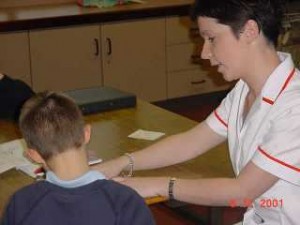A dentalized lisp is similar to a frontal or interdental lisp. With a frontal lisp, the child protrudes the tongue through the front teeth when pronouncing the “s” and “z” sounds. Children with a dentalized lisp push the tongue up against the front teeth, rather than through the front teeth. A dentalized lisp may arise during typical speech development. Some children with a dentalized lisp “grow out of it” by the time they are about four years old. However, it’s always best to bring your child to a speech-language pathologist (SLP), even if you think he might grow out of his articulation difficulty.
Help for Children with Lisps
Pronunciation & Lisps Speech DisordersIf your child is diagnosed with a lisp, it means that he has trouble pronouncing “s” and “z” sounds. There are four types of lisps:
- A palatal lisp means that when your child tries to make an “s” or a “z” sound, his tongue contacts the soft palate.
- A lateral lisp means that air travels out of either side of the tongue. Children with a lateral lisp produce “s” and “z” sounds that sound “slushy.”
- A dentalized lisp means that your child’s tongue makes contact with his teeth while producing the “s” and “z” sounds.
- An interdental lisp, sometimes called a frontal lisp, means that the tongue pushes forward through the teeth, creating a “th” sound instead of an “s” or “z” sound.


